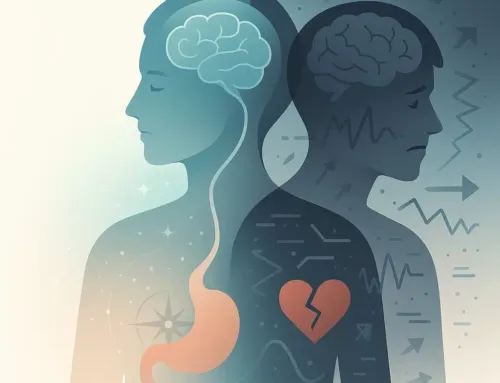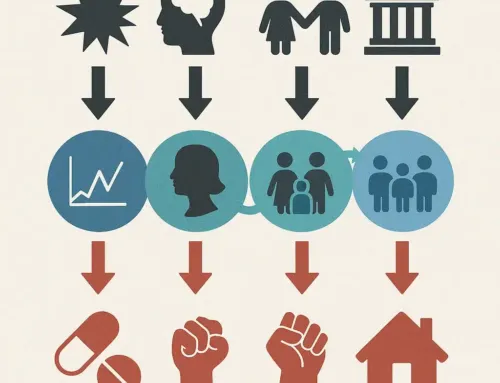
Approx. read time: 6.7 min.
Post: How Living Among Others Shapes Our Gut Microbiome and DNA
Impact of Living Among Others on Gut Microbiome and DNA. The human body is a dynamic ecosystem, continuously shaped by the environment, lifestyle, and interactions with others. Among the fascinating ways our surroundings influence us are changes in our gut microbiome and even subtle impacts on our DNA expression through epigenetic mechanisms. When we live in close proximity with others, whether in family units, communities, or shared spaces, our bodies adapt in remarkable ways.
This article delves into how cohabitation affects our gut microbiome, the interplay of shared environments and genetic expression, and what science reveals about these intriguing phenomena.
The Gut Microbiome: A Shared Ecosystem-Impact of Living Among Others on Gut Microbiome and DNA
The gut microbiome, consisting of trillions of microorganisms including bacteria, viruses, fungi, and other microbes, is vital for digestion, immune function, and mental health. While the composition of the microbiome is unique to each individual, it is surprisingly fluid and influenced by factors like diet, environment, and proximity to others.
Microbial Exchange in Shared Spaces
When people live together, their gut microbiomes tend to converge over time. A landmark study published in Nature (2014) revealed that couples who lived together had more similar microbiomes compared to unrelated individuals who did not cohabit. This microbial exchange occurs through various channels:
- Direct Contact: Skin-to-skin interactions facilitate the transfer of microbes.
- Shared Resources: Items such as utensils, towels, and even the air we breathe contribute to microbial sharing.
- Dietary Habits: People living together often consume similar foods, which influences their gut microbiome composition.
Interestingly, this convergence is not limited to humans. Pet owners and their dogs, for example, often share microbiota, as noted in a 2017 study from the University of Arizona. This emphasizes the role of the environment in shaping microbiomes across species.
Impacts on Health and Well-Being
Living among others can enhance the diversity of the gut microbiome, which is often associated with better health outcomes. However, this can also have drawbacks. Shared environments can facilitate the transmission of pathogenic microbes, leading to conditions such as gastrointestinal infections.
Epigenetics: How Living Together Influences DNA Expression
Unlike changes to the genetic code itself, epigenetic changes involve modifications that regulate gene activity. These modifications, often triggered by environmental and social factors, include the addition of chemical groups to DNA or histones. Cohabitation and social interaction play pivotal roles in epigenetic changes.
Stress and Social Bonds
One of the most studied areas of epigenetics is the impact of stress. Living with others, especially in close quarters, can be both a source of stress and a buffer against it:
- Positive Social Interactions: Strong relationships and emotional support can reduce stress, leading to beneficial epigenetic changes. For instance, oxytocin—sometimes called the “love hormone”—can promote genes linked to relaxation and immune function.
- Conflict and Chronic Stress: On the flip side, tense living situations can elevate cortisol levels, a stress hormone. High cortisol is associated with epigenetic changes that increase the risk of chronic conditions like depression and heart disease.
A Study in Mice and Epigenetic Inheritance
A 2019 study conducted by researchers at the University of California, Berkeley highlighted how social environments can trigger epigenetic changes that persist across generations. In this study, mice living in enriched environments with social interaction and physical activity exhibited changes in brain-related gene expression. Remarkably, these changes were passed on to their offspring, showing that social conditions can influence genetic expression across generations.
The Role of Diet and Lifestyle in Shared DNA and Microbiome Changes
Living among others inevitably leads to shared dietary habits, which profoundly affect the gut microbiome and epigenetic landscape. Common mealtimes, food preferences, and cultural practices around food introduce similarities in microbial composition and gene expression.
Fermented Foods and Microbial Diversity
Traditional fermented foods, such as yogurt, kimchi, and kombucha, are rich in probiotics that contribute to microbiome diversity. In cultures where communal meals featuring fermented foods are common, individuals exhibit more robust gut health and reduced inflammation. A 2021 study in Cell revealed that families who consumed fermented foods together experienced increased microbiome diversity and lower markers of chronic inflammation.
Exercise and Its Shared Impact
Physical activity is another factor that influences both the microbiome and epigenetics. When cohabiting individuals adopt group fitness routines, their microbiomes adapt in similar ways. Exercise promotes beneficial bacteria like Akkermansia muciniphila, which is associated with improved metabolism and reduced inflammation. Shared activities also contribute to epigenetic modifications related to cardiovascular and neurological health.
The Cultural and Evolutionary Context of Microbiome Sharing
Throughout human history, cohabitation has been the norm, whether in hunter-gatherer groups, agrarian societies, or modern cities. This shared living arrangement has shaped human evolution in profound ways:
- Immune System Development: Exposure to diverse microbes in communal settings has strengthened human immune systems. For example, early childhood exposure to siblings’ microbiomes has been linked to lower rates of asthma and allergies.
- Cultural Practices: Many traditional cultures have rituals involving communal eating, caregiving, and hygiene that encourage microbiome sharing. These practices may have evolved as a way to promote collective health.
- Modern Challenges: Urbanization and smaller household sizes reduce microbial diversity, potentially contributing to the rise in autoimmune diseases and allergies.
The Science of Cohabitation: Key Research Studies-Impact of Living Among Others on Gut Microbiome and DNA
Several groundbreaking studies shed light on how living among others alters the microbiome and DNA:
- The Amish vs. Hutterites Study (2016): This study, published in The New England Journal of Medicine, compared the microbiomes of two genetically similar farming communities. The Amish, who live in close-knit communities with significant microbial exposure, had more diverse microbiomes and lower rates of asthma compared to the Hutterites, who use industrialized farming practices.
- The Twins Microbiome Study (2020): Researchers at King’s College London studied identical twins living apart. The findings highlighted that environmental factors, including social interaction and shared diet, had a greater influence on microbiome composition than genetic similarity.
- Human-Microbe Co-Evolution Study (2022): Published in Science Advances, this study found that certain gut bacteria co-evolved with humans over thousands of years, adapting to changes in diet and social structure. This co-evolution underscores the symbiotic relationship between humans and their microbiota.
Practical Implications: How to Optimize Microbiome and Epigenetic Health
Understanding how our environment and social interactions influence our biology opens new avenues for improving health. Here are some actionable insights:
- Foster Strong Social Bonds: Positive relationships not only reduce stress but also promote beneficial epigenetic changes. Engage in meaningful connections with family, friends, or community groups.
- Diversify Your Diet: Incorporate a variety of fiber-rich foods, fermented products, and plant-based nutrients to support a resilient gut microbiome.
- Embrace Nature and Diversity: Spending time outdoors and exposing yourself to diverse environments can enrich your microbiome and improve overall well-being.
- Practice Group Activities: Shared physical activities, such as yoga or team sports, can align lifestyle habits and enhance microbiome diversity.
- Prioritize Mental Health: Since stress influences both the microbiome and epigenetics, practices like meditation, mindfulness, and therapy are essential for holistic health.
Conclusion: A Shared Journey of Biological Adaptation
Living among others profoundly impacts our gut microbiome and DNA through shared environments, habits, and interactions. As science continues to uncover the intricacies of these relationships, it becomes evident that human health is not an isolated journey but a shared endeavor. By fostering positive social environments and embracing diversity in diet and lifestyle, we can harness the power of these biological connections for better health and well-being.
As research advances, the interplay of microbiomes, DNA, and social environments will undoubtedly reveal even more about the ways we influence—and are influenced by—the people and spaces around us. This shared journey is a testament to the interconnectedness of life, from our microbiota to our very genes.
Related Videos:
Related Posts:
Habits to Improve Gut Health and Strengthen Immunity
Your DNA isn’t Destiny: How Lifestyle Choices can Extend your Life
Supporting Gut Health: Essential Dietary Strategies and Foods
The Future of Technology: Merging with Our Lives
Intermittent Fasting (IF) and Protein can boost your Gut Microbiome Diversity









